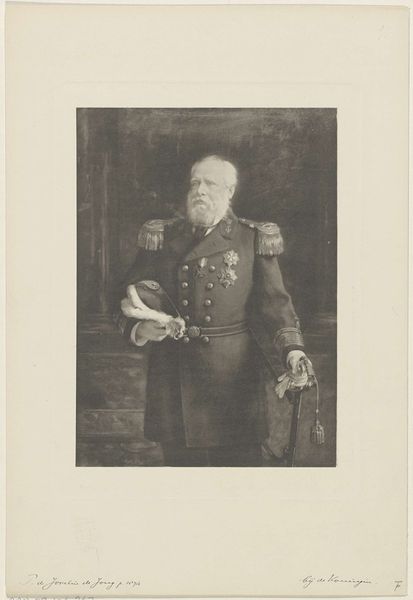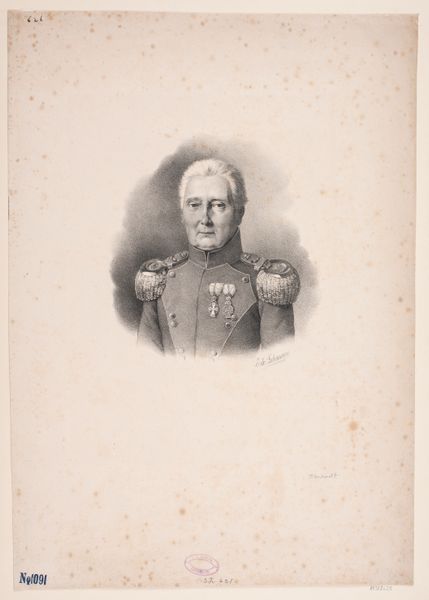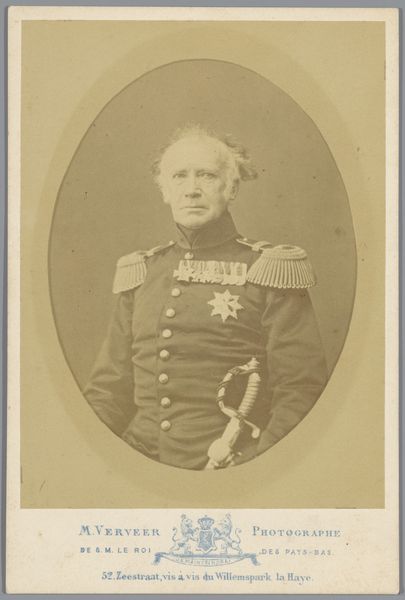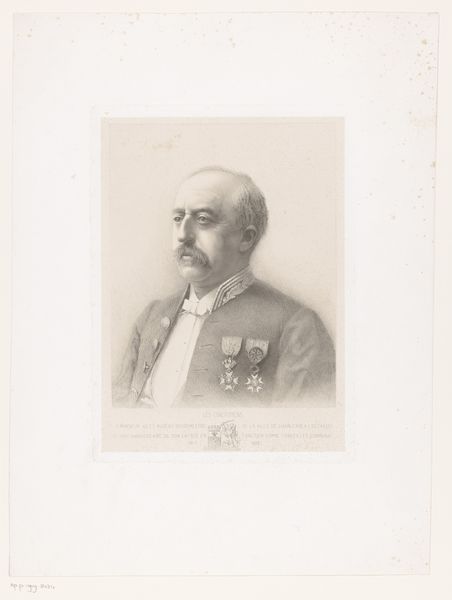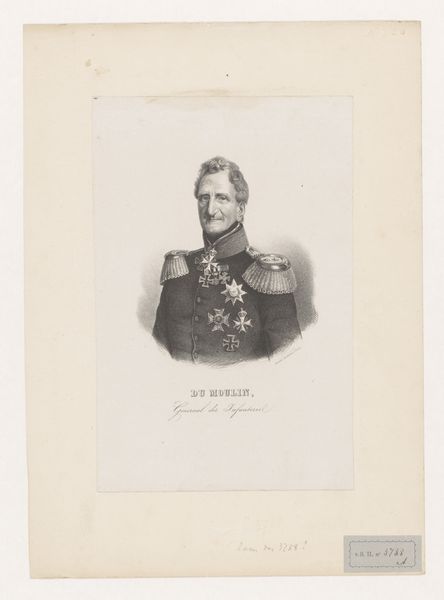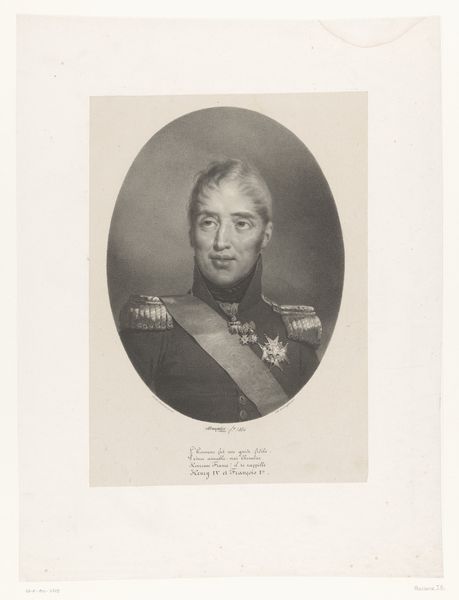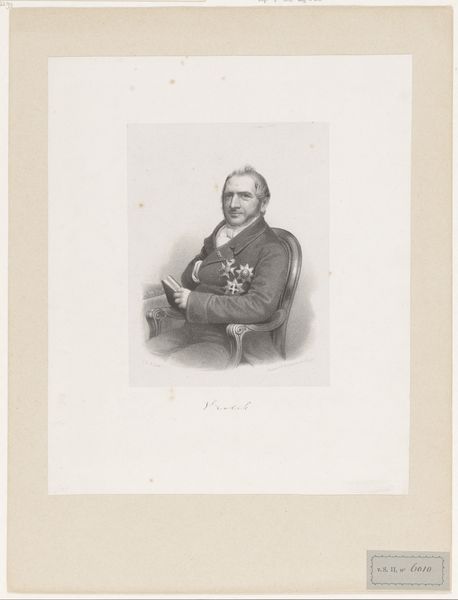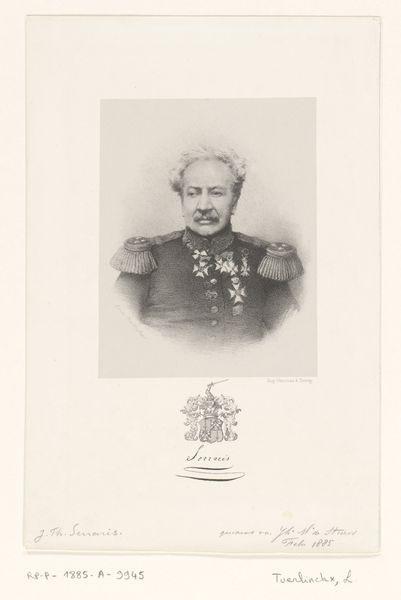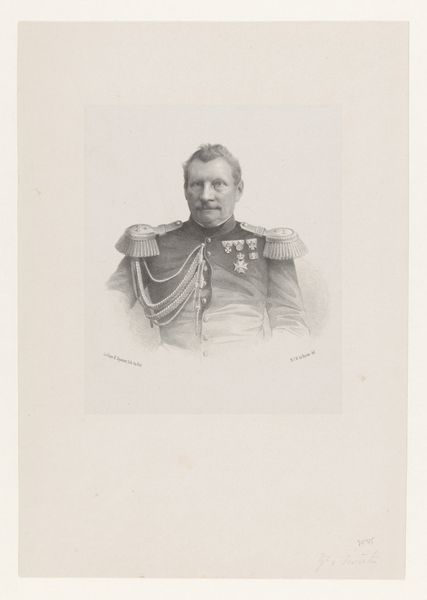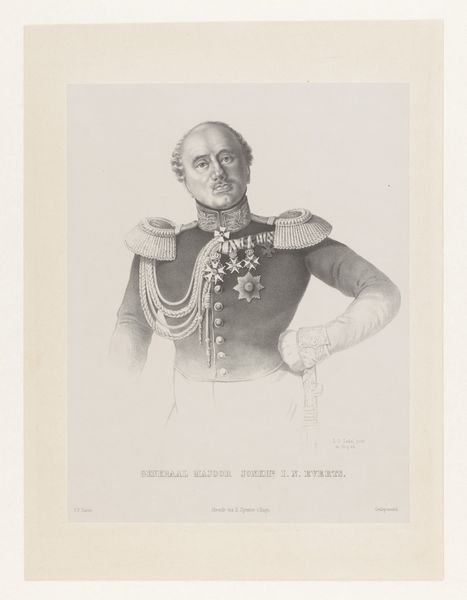
Fotoreproductie van een geschilderd portret van een militair in uniform, aangeduid als commandant Littré 1860 - 1890
0:00
0:00
print, photography, gelatin-silver-print
#
portrait
# print
#
photography
#
framed image
#
gelatin-silver-print
Dimensions: height 280 mm, width 228 mm, height 398 mm, width 298 mm
Copyright: Rijks Museum: Open Domain
Curator: What strikes me immediately is the almost confrontational stare. There's a definite weight and power projected here, even in reproduction. Editor: That's interesting because my initial response is one of subdued formality, like we are seeing the reproduction of Michel Berthaud’s photograph of, most likely, Commandant Littré; a portrait made sometime between 1860 and 1890 that is carefully arranged and rigidly composed. It’s meant to convey authority, certainly. Curator: Oh, undoubtedly, but I am really interested in what these reproductions signify: the layered encoding of identity, achievement, even cultural dominance, especially when translated into widely distributed photographs such as gelatin-silver prints of this time. Editor: You raise such crucial points. To me, the proliferation of such images participates in the consolidation of power; It becomes crucial to deconstruct the mythologies embedded in portraits of military figures during an era rife with conflict. Think about the legacy of colonialism, for instance, silently reinforced through images just like this one. Curator: Exactly! The subject wears the symbols of his status so boldly, decorations displayed proudly on his uniform: These aren't mere ornaments, they signify active participation within a specific system of power and the image creates this heroic depiction as the symbolic "good guy" or representative for its people. Editor: Right! This is further proof of visual language doing what it does best: conveying ideologies! Considering Littré’s background within the French military apparatus demands that we consider the implications of what this imagery suggests regarding France’s imperial ambitions. It asks the hard questions about agency, responsibility, and who ultimately benefits from these carefully crafted images of leadership and authority. Curator: I find myself lingering on the reproduction method as much as the sitter, actually. Thinking about that shift in photographic accessibility in the late 19th century... I see continuity in its representational aims but so, so different to say a painted portrait of the era, where subtle manipulation was expected and normalized. Editor: That is important to consider. I suppose both painted portraits and reproduced photographic ones reinforce specific ideals through both artistic and mechanical means... And ultimately leave traces of ideological frameworks from the time they are circulated, which encourages further conversations and questions, such as this one. Curator: Yes, our fleeting glimpse opens into far wider social and political conversations which helps to ensure images from our cultural memory do not lull us into any historical slumbers! Editor: Absolutely, understanding their loaded nature ensures our reception is constantly self-aware!
Comments
No comments
Be the first to comment and join the conversation on the ultimate creative platform.
